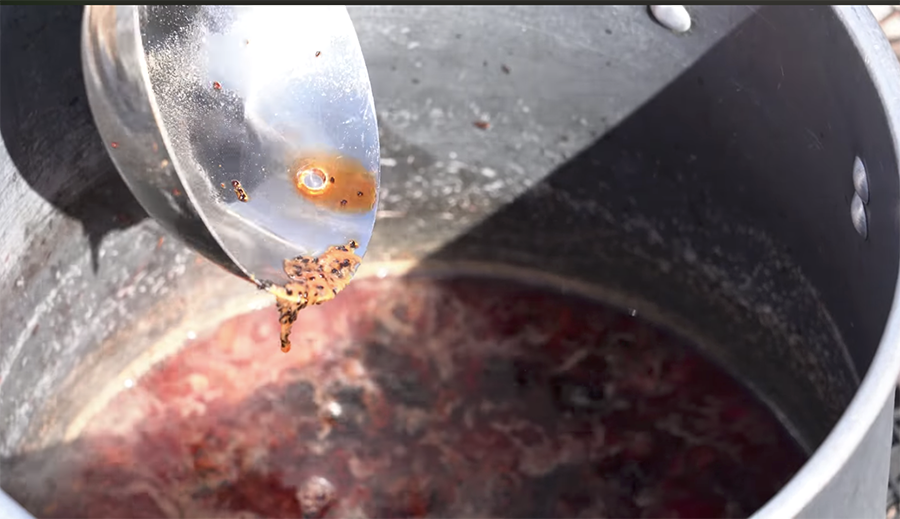Gila River Indian Community member shares his knowledge of making sithol
Christopher Lomahquahu
Gila River Indian News
The COVID-19 pandemic hasn’t stopped the Saguaro cactus fruit from ripening or Gila River Indian Community members from passing on knowledge about harvesting this summertime staple. Each year O’otham come together to pick the prized bahithaj fruit.
The Gila River Health Initiative’s annual harvest was canceled, but they recently released a video called, “How to Make Bahithaj Sithol,” on the Gila River Indian Community Facebook page with the help of Antonio “Gohk” Davis of District 5.
Harvesting bahithaj is a community effort for those who scour the desert with kuipud’s in hand to knock the fruit off of the towering Saguaro. With the on-going pandemic, many of the large scale bahithaj harvests have been canceled, but the tradition continues with families taking it upon themselves to pick bahithaj for sithol.
“This whole process is tedious, but it’s necessary,” said Davis on the steps to make sithol. Bahithaj harvest occurs in June or Ha:Shan Baithag Mashath, which translates as “Harvest of the Saguaro cactus fruit moon,” (Huhugam Heritage Center) and refers to the ripening
of the cactus fruit.
Heating the bahithaj is a two step process to break down and extract the juices from the pulp and seeds and then re-heating until the leftover liquid thickens. Davis described the process of making sithol, which involves using at-least two large pots, a cheese cloth and re to boil the pulp of bahithaj called the jun. Water is added to the jun to help with the process of breaking down the pulp, which will be added to the large pot and brought to a boil.
The cheese cloth is used to filter out the seeds from the juice, which will go back into the pot to complete the cooking process until the juice starts to thicken. Davis said the best way to tell if the sithol is ready is how fast or slow the syrup runs off the ladle.
He said “Ideally you would be able to take your pinky [finger] and run it against your spoon and if its sticky, then you’re in ‘syrup town.’” If the sithol is viscous, then take it off the re and pour it into a mason jar while it is still hot so the heat can form a seal.
“I encourage each and every one of you to go out and ask your elders of [your] community, the different people, that have knowledge of harvesting the bahithaj, making the sithol,” said Davis.
He said bahithaj can be used in a wide range of recipes from traditional to contemporary.
“As we bring in July, or also known as the big rains month, the idea is to go out there, harvest and be safe,” said Davis.




